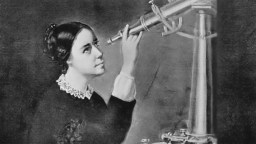This video is part of a series on female genius, in proud collaboration with 92Y’s 7 Days of Genius Festival.
The most fundamental knowledge we have of stars comes from a team of Harvard astronomers working at the turn of the 19th century. This team, known as the “Harvard computers” for their ambitious calculations, was composed entirely of females. As astronomer Anna Frebel explains, male researchers were interested in galaxies — the day’s hot topic. As a result, women pioneered the field of stellar research. Their methods of cataloging stars and determining their chemical composition are still taught at universities today.
Anna Frebel: Stellar astronomy — so the work with stars — has actually a strong tradition of women working in the field and making significant contributions. Many people, certainly about a hundred years ago, they just thought, “Stars are not so interesting; let’s study galaxies.” That was the big thing, because that was the time when people found out that the universe is expanding and that was, of course, found out by studying galaxies. So that was a hot topic. Women were hired to do stellar work. So "stellar" in both ways — working with stars, but it also actually turned out that there work was stellar because they did so much. They classified stars; they calculated positions and other things about all these objects.
For example, Annie Jump Cannon classified in her lifetime, I think, half a million stars or something. And her classification scheme is still used and still taught. I teach it in my introductory astronomy class. Another lady, Cecilia Payne-Gaposchkin; she found out that stars are made mostly from hydrogen and helium. Stars are made 75 percent hydrogen, 25 percent helium. But at that time — that was maybe around 1914-1915 — it was thought that stars are made of the same material as the Earth. And so this was absolutely brilliant because she applied quantum mechanical knowledge to stars for the very first time. And at first, people laughed at it and they wouldn’t believe her. But this is such a fundamental result; I cannot stress this enough. I mean everything we know about the universe rests now on the assumption and the knowledge that what stars are made of, namely mostly hydrogen and helium, because the universe is mostly made of hydrogen and helium.
And so these are just two examples of these early works by these women who were called the Computers, the Harvard Computers because they all worked up there and they painstakingly did all these classifications and calculations that, today, indeed computers do. But without their contributions, I think our overall knowledge of astronomy would not — or for a long time — would not have been what it was.





